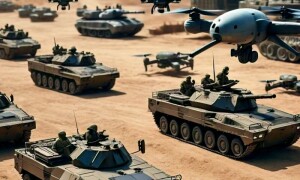THE business of negotiating peace — especially in a theatre as complex as Afghanistan — is not easy.
While at times it appears that the Afghan peace process is on its way to a resolution, at others it seems as if there are miles to go before stability and calm can be achieved.
This is especially true whenever there is violence in the war-torn country, such as Saturday’s horrific blast at a wedding hall in Kabul that killed over 60 people.
However, while talking to this paper recently, Suhail Shaheen, the Afghan Taliban’s chief spokesperson, indicated that all is not lost where the peace process with the Americans is concerned.
In fact, he spoke in optimistic tones, saying that “90pc” of issues between the Talibs and the Americans had been resolved.
The spokesperson was responding to a question regarding reports that the latest round of negotiations had broken down.
He added that some “technical issues” remained, and that the talks were only suspended for “consultations”.
Interestingly, in his Eid message Taliban chief Mullah Haibatullah used a more aggressive tone, calling the US “disingenuous” and accusing it of issuing “contradictory statements”.
Perhaps the difference in the Taliban spokesman’s and chief’s statements can be attributed to the strategy of good cop, bad cop.
While the spokesman is telling the world that all is well and the militia is still willing to talk, the Taliban chief is playing the hard man, indicating that the Talibs are ready to continue the fight. Such tactics are par for the course in war and peacemaking.
Though the Taliban maintain a rigid position in two key areas — declaring a ceasefire and talking to the government in Kabul — their willingness to continue negotiations with Washington shows that the militia is also interested in an end to the conflict, even if it wants to project an image of toughness.
Of course, the Taliban are also buying time and waiting to see what sort of dispensation emerges in Kabul after next month’s presidential election.
If the Taliban themselves are saying “90pc” of matters with the Americans have been resolved, then it is hoped that the remaining 10pc are hammered out soon as well.
However, whatever agreement is reached with the US, complete peace in Afghanistan cannot be achieved unless all Afghan stakeholders are on board where a peace agreement is concerned.
Considering the fact that the country is a patchwork of tribal and linguistic groups, all Afghan parties must reach amodus vivendi where no one is left out, and everyone has a say in ensuring that Afghanistan is run in a representative, democratic manner.
The Americans have tried, and failed, to import democracy into Afghanistan; now the challenge is for all Afghan groups — including the Taliban — to work out a representative system free from outside interference which all Afghans can own and participate in.
Published in Dawn, August 19th, 2019






































